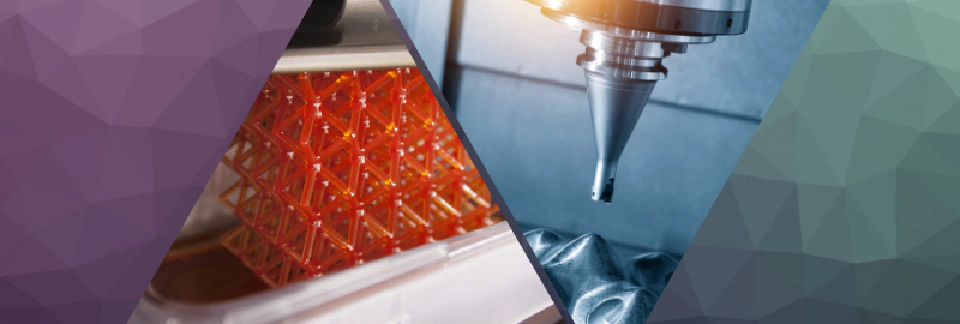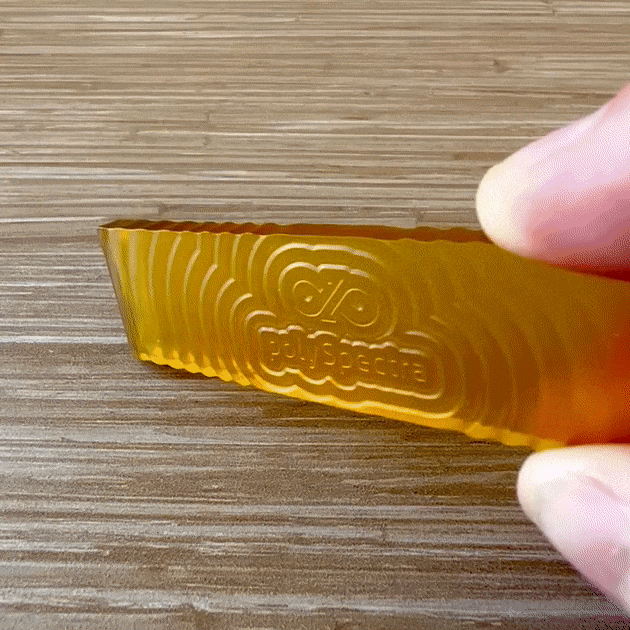Injection Molding vs 3D Printing | Your Definitive Guide
The first polymers were invented for use in injection molding machines. Invented over a century ago, injection molding was one of the first plastic manufacturing processes. Now, 3D printing is a viable form of polymer additive manufacturing. This article compares injection molding vs 3D printing.
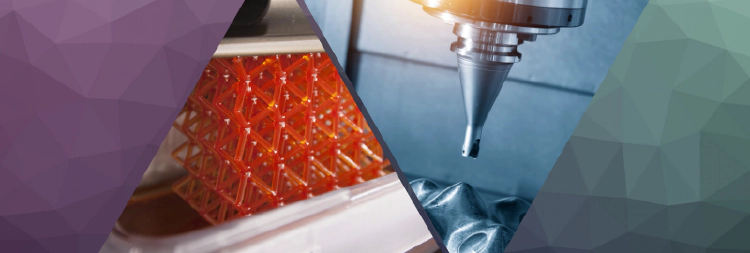
What is injection molding?
Just decades after the Industrial Revolution, American inventors John Hyatt and Isaiah Hyatt, two brothers from New York, furthered the efficiency of mass production by conceptualizing injection molding. Their idea for the first injection molding machine was patented in 1872. The machine used a plunger to inject melted plastic into a mold.
Injection molding would become the first major manufacturing process in plastics engineering technology. Some of the first products created using injection molding included buttons and hair combs. The technology continued to evolve from there, and is still used for mass-manufacturing today.
Types of polymers used in injection molding
The first synthetic polymer was invented specifically for use in injection molding machines. In 1909, Belgian chemist Leo Baekeland invented Bakelite, which was the world’s first synthetic plastic. Bakelite is resistant to heat and electrical conductivity. As such, it became standard in emerging automotive and electrical applications of the early 1900s.
Technology as we know it could not exist without polymers. Bakelite is still used in modern day automotive and electrical applications including the Space Shuttle, but now there are countless polymers to choose from. Some of the most common polymers used in injection molding today include: acrylonitrile butadiene styrene (ABS), polyethylene, polycarbonate, polyamide (nylon), polystyrene, and polypropylene.
Products made with injection molding
Injection molding has been around longer than plastic polymers (John and Isaiah Hyatt’s machine was conceptualized with soluble vegetable fiber) but the vast majority of hard plastic products are manufactured using this technique.
A great example of injection molding are Legos. To mass produce its bricks, LEGO® uses injection molding to form identical, interlocking parts with acrylonitrile butadiene styrene (ABS).
If you look around your home, there are likely countless more examples of products both partially or wholly created with injection molding—including the smartphone or computer on which you’re reading this article. That’s because injection molding is one of the oldest plastic manufacturing techniques, and for over a century, one of the only options. As such, it has been an integral part of many technological advancements.
The vast majority of 3D plastic parts are manufactured with injection molding. A tell-tale sign of injection molding are things like injection pin marks, feed points, and seams across the surface. Known as surface flaws, such blemishes are unavoidable in injection molding and need to be removed (or smoothed, painted over, etc.) in post-production. The seams visible on plastic water bottles are an excellent example of the limitations of injection molding.
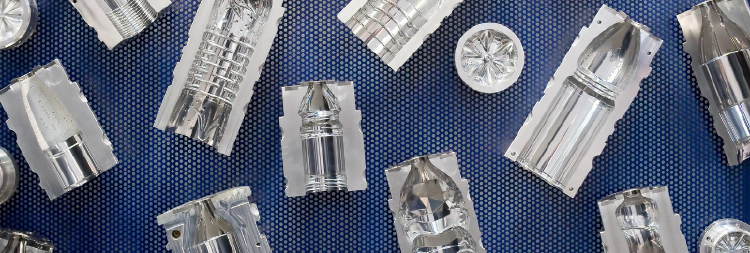
Figure 1: Plastic water bottles are manufactured using blow molding, a subset of injection molding. The seams left on plastic water bottles where the three parts (two halves plus the bottom piece) are fused together, are an example of unavoidable surface flaws in injection molding.
What is 3D printing in additive manufacturing?
When the Hyatt brothers filed their patent for the first injection molding machine in 1872, it would be another century before any major changes were made to polymer manufacturing.
Enter 3D printing.
It wasn’t until 1980 that Hideo Kodama filed the first 3D printing patent. His patent described a rapid prototyping system that used UV light to harden photopolymers. Sound familiar?
Up until the early 2000s, 3D printing wasn’t ideal for mass manufacturing. It was expensive and proprietary. 3D printing didn’t enter mainstream additive manufacturing until the last decade or so. When early patents started expiring, the cost of 3D printers dropped. This paved the way for a swathe of 3D printing innovation in the 2010s—and polySpectra was founded in 2016.
Examples of 3D printed products
Polymers and electricity go hand-in-hand. Bakelite, the first polymer invented for injection molding, was used in early electrical and automotive applications. 3D printing offers newfound innovation with the flexibility to redesign and rapid prototyping. A hundred years after Bakelite was used for dielectric components, polySpectra is 3D printing electric connectors using our highly durable photopolymer resin, COR Alpha. Not only does 3D printing offer more design flexibility, but we are able to print dielectric connectors with great precision that are waterproof and work under extreme temperatures.
Types of polymers in 3D printing
The available types of polymers in 3D printing are limited by the 3D printer you are using. There are several styles of 3D printing processes to choose from. As such, when comparing injection molding vs 3D printing, you must also consider processes and technology.
Fused Deposition Modeling (FDM)
Fused Deposition Modeling (FDM) is the most widely used 3D printing technology on the market today. It is characterized by selectively depositing melted thermoplastic polymers, known as filament, in a predetermined path, layer-by-layer. The most common polymers used in this type of 3D printing include Acrylonitrile Butadiene Styrene (ABS) and Polylactic Acid (PLA). One of the most widely used polymers in injection molding, ABS is known for its longevity and durability. ABS has been developed for use in FDM type 3D printers—but the end products are not as durable as its injection molded counterparts.
Regarding PLA, one major drawback is its longevity: PLA becomes brittle and shatter-prone after just a few months. As such, PLA is commonly used in disposable plastic components, such as drink lids and straws.
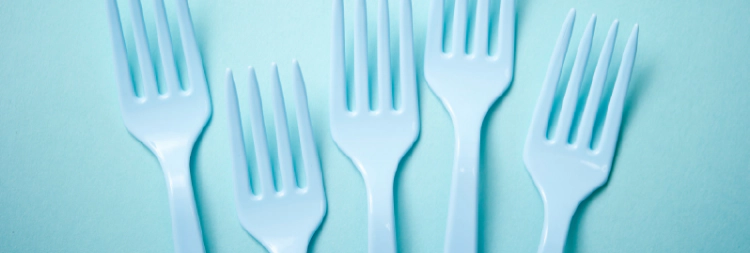
Figure 2: Polylactic acid (PLA) lacks the longevity of other thermoplastic polymers. PLA is often used in manufacturing disposable plastic products such as silverware, straws and lids.
Selective Laser Sintering (SLS)
Selective Laser Sintering (SLS) is a type of 3D printing which is characterized by selectively applying a laser point at a polymer powder, binding the material together in a predetermined pattern. Due to the technological requirements, and size, SLS is not commonly used for mass manufacturing, but it can create more durable parts than FDM. One of the most common polymers used in SLS is nylon. One disadvantage of using SLS polymers is that the surface of the end-product tends to be porous, thus limiting its applications (e.g. it is not suitable for producing waterproof parts).
Stereolithography (SLA)
In a similar process to FDM, stereolithography (SLA) is characterized by selectively depositing photopolymer—a liquid polymer resin that is cured by exposure to light, layer-by-layer.
One disadvantage of acrylate photopolymers is that many tend to produce parts with poor thermomechanical properties, resulting in brittle and fragile end-products. As such, acrylate photopolymers are most commonly utilized in rapid prototyping, where durability and longevity are less critical. However, due to its rigidity and temperature tolerance, polySpectra’s COR Alpha is on of the only engineering-grade photopolymer on the market for 3D printing—and is suitable for mass production.
Pros and Cons of Injection Molding vs 3D Printing
- 3D printing offers more design flexibility: You can 3D print complex structures like latticework (see Figure 3), which can be just as strong as solid parts while saving on material. Injection molding does not afford the same complexity of design.
- 3D printing needs more post-production time: A 3D printed polymer part will need curing time afterwards to ensure its strength and isotropy (think of it like baking clay in a kiln). Even so, consider that with injection molding, you may need to spend time in post-production smoothing out surface flaws or combining pieces of parts into one.
- Injection molding has more existing infrastructure: Since injection molding for mass production has been around for over a century, there are simply more options out there. You will be able to shop around in a larger pool of manufacturing facilities and choose from a larger pool of polymers.
- Mass production vs customization: Once an injection molding process is set up, you can produce tens/hundreds of thousands of the same part. The design freedom of 3D printing allows you to make a part tailored to each customer.
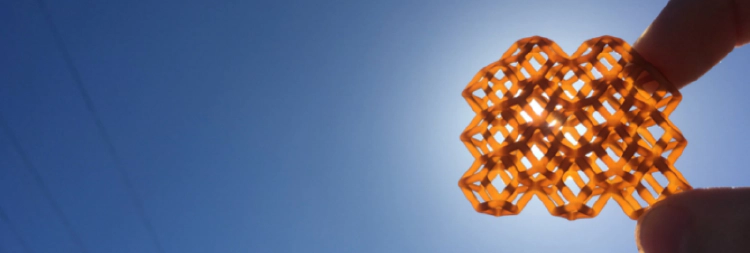
Figure 3: Want to save on material costs? Latticework can replace solid interiors and can only be mass produced with 3D printing.
How much does 3D printing cost vs injection molding?
Using 3D printing in additive manufacturing offers many benefits, but how much does 3D printing cost in comparison to injection molding?
It depends. There is much to consider in injection molding vs 3D printing, such as:
- Setup cost: 3D printing generally has a lower setup cost than injection molding because once you invest in the manufacturing equipment, the only remaining variables are design and materials. Initial setup typically takes longer and costs more with injection molding because someone has to design and manufacture the molds.
- Materials cost: Injection molding has been around for over a hundred years. As such, there are a wider variety of polymers available at a lower cost than with 3D printing. Polymers for 3D printing typically cost more than injection molding. You will need to consider your initial setup costs as well as whether the benefits of 3D printing outweigh the cost of materials. Additionally, this cost may be nonconsequential because 3D printing offers more flexibility in design: For example, you can build a comparable part using a latticework structure, saving on material compared to its molded counterpart.
- Time cost: The cost of time is more complex than the cost of setup and materials. How much is an hour of your time worth to you? How much is a day, or a week, or months? With injection molding, you’ll have to wait longer to get started producing your parts. With 3D printing, you can most likely design and produce a working prototype in a matter of days. How you quantify time cost is for you to decide.
After going through your initial design, materials selection, and setup for injection molding vs 3D printing, you’ll have a range of factors to consider in regards to actual manufacturing. This is a lot more than we can quantify in one blog post because it looks different for everyone. Generally speaking, with injection molding, you can mass-produce large quantities of parts in a short amount of time. With 3D printing, there may be less opportunity for large batch production, but more opportunity for design variation.
→ Read more about the cost comparison of injection molding vs 3D printing in this article.
In Conclusion
Injection molding was the only type of plastic manufacturing for 3D parts for over a century. Now, 3D printing offers more opportunity in mass manufacturing of plastic products than ever before. With 3D printing, you have more flexibility of design than you do with injection molding. 3D printing also produces less waste than injection molding. When considering injection molding vs 3D printing, you must also consider the setup cost, materials cost, and time cost. Since 3D printing for additive manufacturing is an emerging technology, you may have fewer polymers to choose from than with injection molding. However, we are confident that the benefits of 3D printing outweigh the costs!
Want the Durability of Injection Molding with the Flexibility of 3D Printing?
With COR Alpha, Make it Real by 3D printing with the durability of molded parts. COR Alpha is only available from polySpectra. If you want to print a production-ready part, get started by requesting a free quote and design consultation. Our team of designers and material specialists will work with you to turn your prototype into an engineering-grade 3D-printed design.


